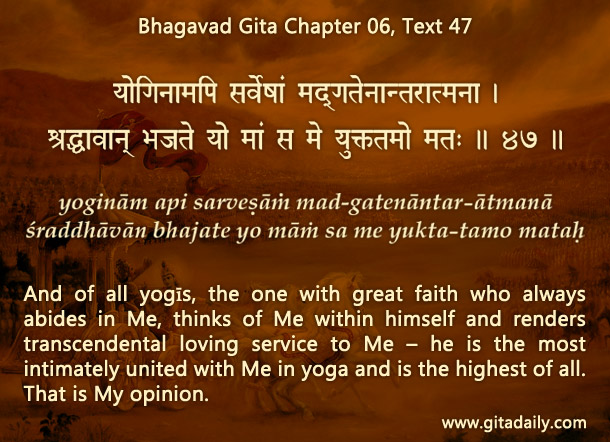The Gita is a complex philosophical book. Simultaneously, it is a practical spiritual guide. When we understand its essential concepts, we can discern, amidst its philosophical exposition, its pragmatic purpose.
Echoing themes from the Upanishads, Gita wisdom indicates that existence can be explained essentially in terms of three truths (tattva-traya). These can be expressed as the alliterative threefold: jagat (the material world), jiva (the soul) and Jagadisha (the supreme controller, the source of everything).
The Gita’s purpose is to raise our consciousness from the material level to the spiritual level. Initially, Arjuna’s consciousness is at the level of the jagat – he is distressed by contemplating about the material consequences of his choices (01.32-25) and is confused about which of his material identities is the most important.
The Gita raises our consciousness to the level of jiva by explaining that we are non-material spiritual beings (02.13). To act according to our spiritual identity, we need to work with detachment from worldly pleasures and results. By such detached action, we become atmavan (02.46), enriched with realization of our spiritual identity.
The Gita’s first five chapters primarily delineate karma-yoga to raise our consciousness to the jiva level. The sixth chapter outlines how such yoga of action paves the way to dhyana-yoga, which comprises renunciation and contemplation. Significantly, this chapter concludes with the declaration that the topmost yogis are those whose minds are absorbed in Jagadisha (06.47).
And the next verse (07.01) begins the Gita’s central bhakti section that outlines an alternative, preferable way of for making our mind attached to Krishna – the way of bhakti-yoga. After expounding variously the glory of Jagadisha and of devotion to him, the Gita conclusively calls for single-minded surrender to that all-attractive Supreme, our eternal Lord.
Thus, the Gita raises our consciousness to the zenith of reality.
To know more about this verse, please click on the image
Explanation of article:
Podcast:


Leave A Comment